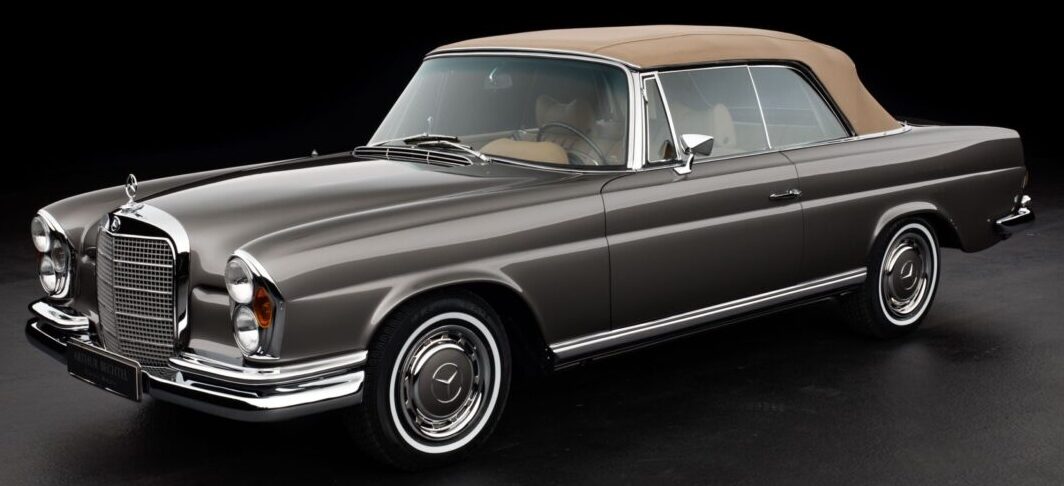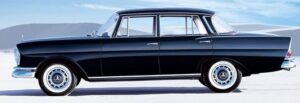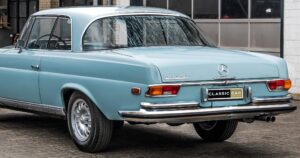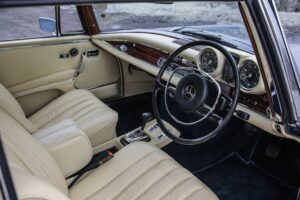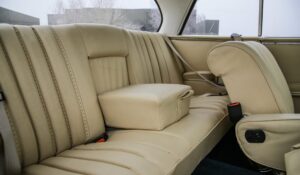Mercedes-Benz W111: The timeless elegance of iconic coupes
1. The evolution of the Mercedes-Benz luxury coupe: From the W111 to the SLC
2. A new era begins: The W111 saloon
3. The W111 coupe: Redefining elegance
4. The legacy continues: The SLC and beyond
5. The evolution of the S-Class coupe
6. Why now is the perfect time to own a classic Mercedes coupe
The evolution of the Mercedes-Benz luxury coupe: From the W111 to the SLC
Mercedes-Benz W111 represents a pivotal moment in the history of luxury coupes, embodying the elegance and refinement that the brand is renowned for. Launched in the early 1960s, this iconic coupe redefined what it meant to be a full-size luxury vehicle, standing as a testament to Mercedes-Benz’s commitment to quality and design. With its stunning pillar-less profile, spacious interior, and sophisticated engineering, the W111 coupe quickly gained recognition among enthusiasts and collectors alike. Alongside its successor, the C107 SLC, the W111 laid the groundwork for the modern S-Class coupe lineage, ensuring that Mercedes-Benz remained synonymous with luxury and performance in the automotive world. In this article, we explore the rich legacy of the W111, its evolution, and its impact on classic car culture.
A new era begins: The W111 saloon
In 1959, the all-new W111 saloon was unveiled, marking a fresh chapter in the Mercedes-Benz story. The car featured an instantly recognizable “fin tail” design, inspired by the fashionable fins seen on American cars in the 1950s. These fins, although claimed to assist with reversing, were a nod to the trends of the era, signaling a bold move into the modern age for Mercedes-Benz.
However, it wasn’t just about aesthetics. The W111 saloon was a pioneer in automotive safety, incorporating new safety features that would become standard across the industry. The design moved away from the curvaceous lines of the 1950s, embracing a more angular and streamlined look that hinted at the future of luxury cars.
The W111 coupe: Redefining elegance
In 1961, two years after the introduction of the saloon, the world saw the debut of the W111 coupe. This model was a masterclass in elegance and engineering. Designed by Paul Bracq, the same visionary behind the iconic Pagoda, the W111 coupe softened the lines of the saloon, creating a more sophisticated and flowing shape.
Unlike previous Mercedes coupes, which were essentially shortened versions of full-size saloons, the W111 coupe retained the same wheelbase, ensuring ample space for four adults. This decision allowed Mercedes-Benz to create a genuine four-seat luxury coupe without compromising on comfort or style, setting a new standard for future models.
One of the coupe’s most notable design features was the absence of the central B-pillar, creating a true pillar-less design. This innovation gave the W111 coupe a sleek, uninterrupted profile and allowed passengers to enjoy the experience of an open car, especially when paired with a sunroof. This combination of luxury, spaciousness, and visual elegance would come to define the S-Class coupe lineage in the years to come.
The legacy continues: The SLC and beyond
When the “fin tail” design was retired in 1965, the W111 saloon was replaced by the W108 and W109 models. However, Mercedes-Benz made the interesting decision to keep the W111 coupe in production until 1971, long after its saloon counterpart was discontinued. This extended production life highlights the enduring appeal and success of the model.
In 1971, the W111 coupe passed the torch to its successor, the C107 SLC. While previous Mercedes coupes were based on full-size saloons, the SLC was instead a lengthened version of a sports car, offering a unique combination of luxury and performance. It was a model that stood out in the classic car world, offering true four-seat comfort in a way that few of its contemporaries could match.
The SLC, much like the W111 coupe before it, solidified Mercedes-Benz’s reputation as the maker of ultimate luxury coupes. Its spacious interior, high-quality materials, and smooth ride made it a popular choice for those seeking a refined, comfortable, and stylish vehicle. The SLC’s unique design also paved the way for future S-Class coupes, which would continue to evolve and redefine the segment.
The evolution of the S-Class coupe
The success of the W111 coupe and the SLC laid the groundwork for future generations of Mercedes-Benz coupes. From the W126 SEC of the 1980s to the C126, C140, and beyond, each new model built on the legacy of its predecessors, adding modern innovations and refined styling while maintaining the core values of luxury, comfort, and exclusivity.
With the introduction of the C215 in the early 2000s, the S-Class coupe began to shift towards a more performance-oriented approach, aligning itself more with the grand tourer segment. However, the spirit of the W111 coupe—the pursuit of creating the ultimate luxury coupe for discerning buyers—remains at the heart of every S-Class coupe to this day.
Why now is the perfect time to own a classic Mercedes coupe
For enthusiasts and collectors, the W111 coupe and the SLC represent a golden era of Mercedes-Benz design and engineering. Both models offer a driving experience that is timeless, with the W111 280SE 3.5 V8 being particularly sought after in the classic car world. Though the SLC has long been considered an underrated gem, its status as a true classic is beginning to rise, and prices are steadily increasing.
Whether you’re drawn to the timeless elegance of the W111 or the unique charm of the SLC, now is an ideal time to invest in these iconic models. Both represent the pinnacle of luxury coupe design, and with interest growing, these cars are set to become even more coveted in the years to come.
Are you already a proud owner of a Mercedes W111? If so, check out our selection of parts for this car at the following link:
https://octoclassic.com/product-category/mercedes-benz/w111
Photos sources: Classic Driver, gomotors.net, theslshop.com






